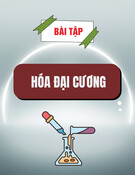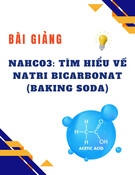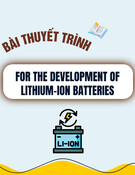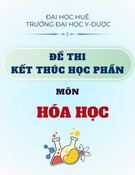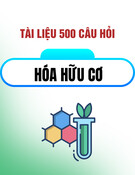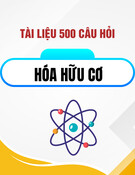
162
HNUE JOURNAL OF SCIENCE
Educational Sciences 2024, Volume 69, Issue 3, pp. 162-171
This paper is available online at http://hnuejs.edu.vn/es
DOI: 10.18173/2354-1075.2024-0057
DEVELOPING SELF-LEARNING ABILITY FOR STUDENTS THROUGH
TEACHING “THE PERIODIC TABLE OF ELEMENTS” IN CHEMISTRY 10
APPLYING THE FLIPPED CLASSROOM MODEL
Vo Van Duyen Em1, Nguyen Thi Kim Anh1,* and Ho Thi Kieu Ngan2
1Faculty of Chemistry, Quy Nhon University, Quy Nhon city, Vietnam
2Master student of the Faculty of Chemistry, Ho Chi Minh University of Education
*Corresponding author: Nguyen Thi Kim Anh, e-mail: nguyenthikimanh@qnu.edu.vn
Received July 4, 2024. Revised July 22, 2024. Accepted July 31, 2024.
Abstract. The formation and development of learners’ abilities are becoming more prevalent
and necessary. Self-learning ability (SLA) is one of the capabilities that people are interested
in developing. Besides the specific skills of the subject, chemistry teachers also focus on
developing SLA for students. Currently, various educational models have emerged to align
with educational trends, including the flipped classroom model (FCM), which contributes to
competency development, particularly in self-learning ability. In recent years, this model has
gained popularity. Studying with FCM helps students have more time to learn, research, and
master the knowledge. Moreover, students can learn independently. This study investigates
the impact of the flipped classroom model on self-learning ability development through
teaching “The Periodic Table of Elements” at a high school in Tay Ninh province. Surveys
into the reality of the usage of FCM and the development of SLA at several high schools in
Tay Ninh province show that most teachers care about the development of SLA for students.
However, they assign tasks to students in the form of questions after the lessons. Most
students only base on the knowledge that the teachers teach in class to answer the questions.
This leads to SLA not being developed. The authors use a one-group pretest-posttest design
in this study. The results of the pretest and post-test show that students have higher scores
after participating in learning with FCM. Besides, the components of SLA are evaluated on
becoming better after the intervention by using a scale of 5 levels combined with a checklist.
Thus, applying FCM to develop SLA for students is necessary.
Keywords: self-learning ability, flipped classroom model, periodic table of elements, Grade
10 Chemistry, Tay Ninh province.
1. Introduction
With the development of the Fourth Industrial Revolution (Industry 4.0) to train human
resources to contribute to the construction and development of the country, education focuses on
forming and developing learners' capacity. SLA is a core competency that every learner needs to
study and work [1]. Therefore, the formation and development of this ability is necessary. The
authors of many domestic and foreign scientific articles mentioned SLA. In the world, some
typical works mentioned are following: Samaras and colleagues have studied the close
relationship between teaching and research; self-study and self-research help improve the quality

Developing self-learning ability for students through teaching the Periodic Table of Elements Chemistry 10…
163
teaching for STEM lecturers [2]; The authors Sirisha and Souma studied the influence of SLA on
academic achievement; thanks to self-study, students have better academic results, progress in
knowledge and the ability to schedule time to perform learning tasks effectively [3]; Min Wu and
colleagues studied the influence of self-study and self-adjustment on the academic achievement
of Grade 10 students in chemistry. The results showed that most students could study their own
and adjust their learning results at a high level [4]. In Vietnam, many researchers have been
studied such as Vuong Cam Huong who has presented the SLA framework for high school
students [5]. Nguyen Van Dai and Dao Thi Viet Anh have proposed the principles and processes
for building a primary competency framework when teaching with the Blended learning model [6].
Ho Thi Loan and Nguyen Thi Hong Phuong have emphasized the role of primary education in
learning and life. In addition, these authors also proposed a number of capacity development
measures such as organizing group work and discussions during class, activating learning
activities through situations, guiding students to read textbooks and references on their own, etc. [7].
Nguyen Minh Giam and colleagues have proposed a specific teaching process using an AI
Chatbot to develop SLA. The support of an AI Chatbot can help students study anytime,
anywhere, and according to their abilities [8].
"The object of study of Chemistry is substances and metamorphosis" [9]. Therefore,
throughout the content circuit, much difficult and abstract knowledge requires learners to spend
more time researching, learning, and inculcating knowledge, especially the knowledge of the
periodic table of chemical elements. With 9 lessons, the knowledge content is in topic 2 in the
10th-grade Chemistry program. After completing the knowledge related to atomic structure, it is
a premise to learn the topic of chemical associations. Therefore, if students do not have a solid
foundation of knowledge in this content, it will be difficult for them to acquire knowledge in the
next content. Therefore, teachers need to design appropriate teaching activities, promote
positivity, and actively explore and grasp learners' knowledge.
The flipped classroom model (FCM) is a modern model that helps improve initiative and
positivity, thereby forming and developing SLA. Many educators have been studying this model
for more than a decade. In the world, there have been many researches about SLA: David Schultz
and colleagues have studied the impact of the reverse classroom model on academic achievement;
students are more interested in learning with the labor model than in learning with the traditional
classroom model [10]. Michael K. Seery's research suggests that FCM creates a positive
classroom, stimulating students' curiosity and interest in learning and acquiring knowledge [11].
Eunice Eyitayo Olakanmi researches the attitudes and achievements of students when using FCM
to teach the content of Reaction speed; the acquisition of knowledge becomes more effective
because students have time to prepare before coming to class, have many opportunities to interact
and discuss with teachers and classmates [12]. In Vietnam, many studies have also affirmed the
use of the FCM in teaching to contribute to the development of secondary education, typically
scientific articles by the authors: Pham Thi Bich Dao et al. [13], Luong Quoc Thai [14], Nguyen
Thi Diem Hang [15], Nguyen Hoang Trang and Bui Thi Thom [16], Pham Thi Binh and Do Xuan
Hoa [17].
Based on the above theoretical and practical studies, it can be considered that the use of the
FCM is an effective teaching method to achieve the knowledge objectives, and at the same time
form and develop capacity. However, in Vietnam, especially in Tay Ninh province, there has been
no research on using the flipped classroom model to teach “The Periodic Table of Elements” to
grade 10 students to develop self-learning abilities. Based on this premise, selecting and
researching the topic of "Developing self-learning ability for students through teaching The
Periodic Table of Elements Chemistry 10 using the flipped classroom model " is highly necessary.

Vo VDE, Nguyen TKA & Ho TKN
164
2. Content
2.1. Flipped classroom model
2.1.1. Concept of the flipped classroom model
According to Marks, FCM is a model with a sequence of learning activities that reverse from
the traditional classrooms [18]. There, learners study new knowledge through E-learning lectures
and references under the guidance of teachers. When participating in the real class, teachers and
students will discuss, share, and solve existing problems [19]. Furthermore, FCM helps students
study basic knowledge at home so teachers have more time to organize activities to practice and
develop students’ abilities [17]. Therefore, FCM emphasizes the role of learners; learners research
on their own, and gain knowledge under guidance, through E-learning materials provided before
participating in the real class. Teachers monitor and assess the progress of task completion,
promptly make adjustments, and provide support when necessary.
2.1.2. The process of organizing teaching with the flipped classroom model
According to the research by Nguyen Hoang Trang and Bui Thi Thom [16] along with a
study of relevant documents, the process of organizing teaching with the flipped classroom model
consists of the following 2 main stages:
Studying at home: Teachers choose content, design lectures, and appropriate learning
materials, and assign tasks. Students watch lectures and complete assigned tasks before coming
to class.
Studying in class: Teachers ask students to exchange knowledge that they have studied at
home and to discuss the problems that students do not understand and do not know. Afterward,
teachers answer questions and conclude. Teachers and students evaluate and self-evaluate the
effectiveness of self-study, find solutions, adjust, and overcome difficulties.
2.2. Ability and self-learning ability
2.2.1. Concept of ability and self-learning ability
According to the Vietnamese and Cambridge Dictionary, ability is the capacity to perform
and complete a specific task. According to the General Education Program of the overall program,
"ability is an individual attribute that is formed and developed through the available qualities and
the process of learning, training, successfully performing a certain activity, achieving desired
results under specific conditions" [1]. Thus, ability can be understood as the capacity of learners
to perform a specific task through their knowledge and experience.
Self-learning ability is an important competency that needs to be developed in the new age.
According to Luong Quoc Thai [14], self-learning ability is the capacity of learners to perform
knowledge activities on their own to solve defined learning tasks. Thus, self-learning ability can
be understood as the capacity of learners to gain new knowledge and skills through their existing
knowledge and experience.
2.2.2. Structure of self-learning ability
Based on the general education program of 2018 [1] and a study by Nguyen Van Dai and
Dao Thi Viet Anh about the design of a competency framework to include 4 competency
components and 10 criteria, each of which has 3 levels [6], we recognize that SLA includes
component competencies (CC) and manifestations (M) as shown in Table 1.

Developing self-learning ability for students through teaching the Periodic Table of Elements Chemistry 10…
165
Table 1. Competency components and manifestations of self-learning ability
Competency components
Manifestations
CC1. Identifying and creating a
study plan
M1. Identifying study objectives.
M2. Creating and adjusting a study plan
CC2. Implementing a study plan
M3. Implementing learning with the provided E-learning
M4. Searching for relevant information and documents
M5. Communicating and connecting with teachers and
friends.
M6. Recording and presenting learning results
CC3. Evaluating outcomes and
adjusting learning
M7. Evaluating outcomes and adjusting learning
2.2.3. Developing a set of tools to assess self-learning ability
Assessment objectives: To provide a timely and accurate manner, the requirements and levels of
achievement corresponding to each component capacity of SLA, reflect the progress of students,
which is the basis for adjusting teaching activities and improving the quality of education.
Through the study of relevant documents, we found that SLA can be assessed through the
following tools:
Scale: used to assess throughout the process from studying at home to participating in studying
in class. This is a tool used to measure the levels of achievement of each expression of each specific
component competency of SLA. In this article, the research scale consists of 3 component
competencies equivalent to 7 manifestations, each of which has 5 specific levels as follows: 1-Not
participating; 2-Not yet achieved; 3-Pass; 4-Good; 5-Very good. Details of the scale are mentioned in
the following link: scale.pdf.
Checklist: used for teachers and students to evaluate the criteria that students have fulfilled or not
done. This helps teachers and students evaluate an overview of manifestations of SLA. The contents
of the checklist are detailed in Table 2.
Table 2. The checklist evaluates the students’ self-learning ability using the flipped classroom model
No.
Criteria
Yes
No
1
Students identify specific, clear and detailed study objectives.
☐
☐
2
Students identify learning tasks and make effective learning plans.
☐
☐
3
Students participate in studying the E-learning.
☐
☐
4
Students complete at least 50% of the test in the E-learning.
☐
☐
5
Students complete 50% of the study sheet related to the lesson.
☐
☐
6
Students discuss the problems of the lesson with teachers and friends.
☐
☐
7
Students correctly answer 50% of the test when studying in class.
☐
☐
8
Students participate in learning activities actively.
☐
☐
9
Students record videos and take photos of the E-learning process.
☐
☐
10
Students discover the cause of the errors and propose solutions.
☐
☐
Using chemistry exercises: This is used to assess the level of knowledge gained when students
study with the flipped classroom model. The exercises in this article, mostly multiple-choice questions,

Vo VDE, Nguyen TKA & Ho TKN
166
are integrated into E-learning. Besides, these exercises are used as a test after self-study at home
through educational games such as Kahoot, quizizz, etc. The details of the exercises are updated on
the following link: exercises.pdf.
Learning products: This can be seen as proof that students really participate in serious learning
with the labor model and this is also one of the effective tools used to evaluate SLA. The learning
products in the research are learning sheets, images, videos, and students’ answers.
Assessment time: While the students participate in learning activities at home with E-learning,
the teachers assign them to scale and checklist to define tasks. After studying in class, based on the
scores of exams and learning products, both students and teachers evaluate the results. Chemistry
exercises are integrated into E-learning to test students’ ability to gain new knowledge. They are also
used for the test (Exam.pdf) when the students take part in studying in class.
2.3. The reality of applying the flipped classroom model to teach chemistry at high
schools in Tay Ninh province
Through a survey of 35 teachers (survey link: https://forms.office.com/r/mh6z1RqSR2) at a
number of high schools in Tay Ninh province, the results are as follows: 82.9% of the teachers
think that the formation and development of SLA for high school students is necessary. From
74.3% to 82.8% of the teachers identify the concept of SLA. This proves that the majority of high
school teachers in Tay Ninh province have researched and are interested in forming and
developing it for students. However, the formation and development of this capacity in high
schools still face many difficulties such as large classes, passive students, and lack of attention.
In addition, chemistry is a difficult subject that makes students easily depressed; many schools
still lack supporting facilities.
On the other hand, through the study of scientific literature, we found that it is possible to
use the flipped classroom model in teaching to develop self-learning capacity. However, from the
survey results, 97% of the teachers have heard of this model, only 18% of them have applied it
and 12% of them have applied it effectively. Thus, currently, the FCM has not been widely used
by chemistry teachers in high schools to form and develop self-learning capacity for students.
Through a survey of 116 students (survey link: https://forms.office.com/r/j9b6F6tb3a) from
a number of high schools in Tay Ninh province, 78.5% of the students believe that self-study
before studying in class is necessary and as many as 81.9% of teachers in high schools assign
learning tasks to students to study at home on regular and very regular bases. However, the
majority (70.7%) of the tasks assigned by teachers are questions after each lesson, or through
applications such as Azota, Google Meet, etc (about 58.7%). However, using azota is the most
common (44.3%).
Thus, teachers are not interested in using the FCM in teaching chemistry in high schools to
develop students' SLA; most of the studying tasks at home are assigned in the form of questions
after the lesson or testing the knowledge learned online. Forming and developing this ability for
high school students has not been taken seriously. Therefore, it is necessary to study the use of
the flipped classroom model in teaching the periodic table of chemical elements to develop self-
learning capacity for grade 10 students.




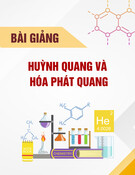
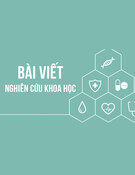
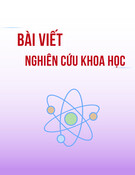

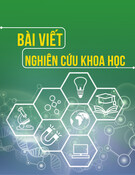


![Đề thi kết thúc học phần Nguyên lí Hóa học 2 [mới nhất]](https://cdn.tailieu.vn/images/document/thumbnail/2025/20251014/anhinhduyet000/135x160/69761760428591.jpg)
